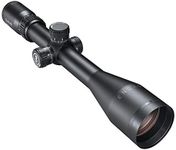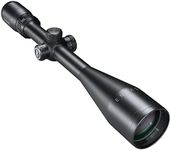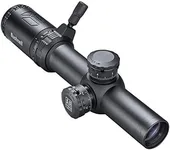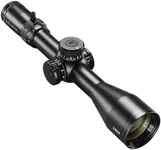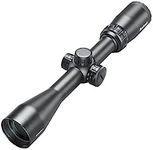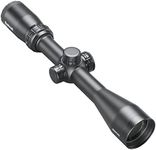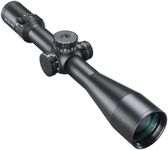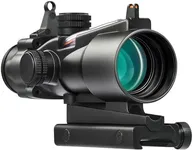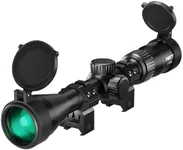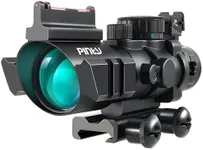Buying Guide for the Best Bushnell Scopes
When choosing a Bushnell scope, it's important to consider several key specifications to ensure you select the best fit for your needs. Whether you're hunting, target shooting, or engaging in tactical operations, understanding these specs will help you make an informed decision. Here are the key specifications to consider and how to navigate them.MagnificationMagnification refers to how much closer the target appears through the scope compared to the naked eye. This is important because it determines how well you can see your target at various distances. Scopes typically have fixed or variable magnification. Fixed magnification scopes are simpler and often more durable, while variable magnification scopes offer more flexibility. For close-range shooting, a lower magnification (1-4x) is sufficient. For mid-range, consider 5-9x, and for long-range, 10x or higher. Choose based on the typical distance you will be shooting.
Objective Lens DiameterThe objective lens diameter is the size of the front lens of the scope, measured in millimeters. This spec is important because it affects the amount of light that enters the scope, impacting image brightness and clarity. Larger diameters (40mm and above) allow more light, which is beneficial in low-light conditions but can make the scope heavier. Smaller diameters (below 40mm) are lighter and more compact but may not perform as well in dim lighting. Choose based on your need for portability versus low-light performance.
ReticleThe reticle, or crosshair, is the aiming point you see when looking through the scope. Different reticle designs serve different purposes. Simple crosshairs are good for general use, while more complex reticles with hash marks or dots can help with range estimation and bullet drop compensation. Illuminated reticles are useful in low-light conditions. Choose a reticle that matches your shooting style and the conditions you expect to encounter.
Field of ViewField of view (FOV) is the width of the area you can see through the scope at a specific distance, usually measured in feet at 100 yards. A wider FOV allows you to see more of the surrounding area, which is useful for tracking moving targets. Higher magnification typically reduces FOV. If you need to track fast-moving targets or require situational awareness, opt for a scope with a wider FOV. For precision shooting at long distances, a narrower FOV may be acceptable.
Eye ReliefEye relief is the distance between your eye and the scope at which you can see the full image. This is important for comfort and safety, especially with high-recoil firearms. Longer eye relief (3.5 inches or more) is better for high-recoil guns to prevent the scope from hitting your face. Shorter eye relief (less than 3.5 inches) can be acceptable for low-recoil firearms. Choose based on the type of firearm you will be using.
Parallax AdjustmentParallax adjustment allows you to correct the parallax error, which occurs when the target image and the reticle are not on the same focal plane. This is important for accuracy, especially at longer distances. Scopes without parallax adjustment are typically set for a specific distance (usually 100 yards). If you plan to shoot at varying distances, a scope with parallax adjustment will help maintain accuracy. Choose based on the distances you expect to shoot.
Durability and Weather ResistanceDurability and weather resistance refer to the scope's ability to withstand harsh conditions and rough handling. This is important for ensuring the scope's longevity and reliability in the field. Look for scopes that are waterproof, fog-proof, and shockproof. These features are often indicated by terms like 'nitrogen-purged' or 'O-ring sealed.' Choose based on the environments you will be using the scope in and how much rough handling it might endure.
